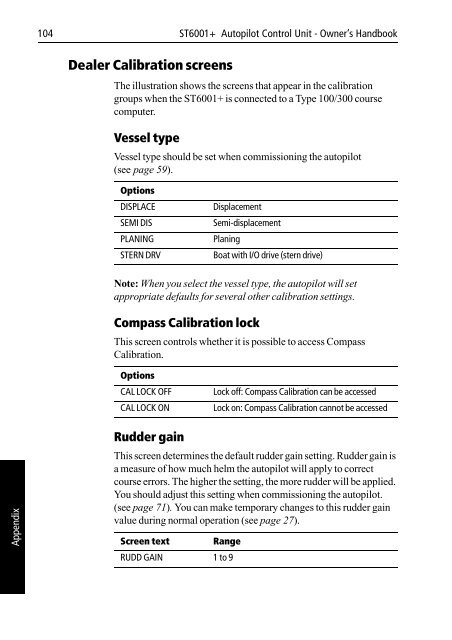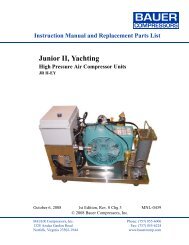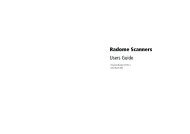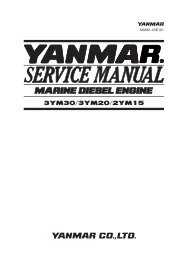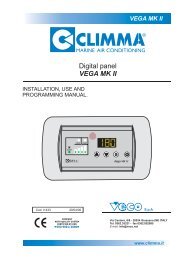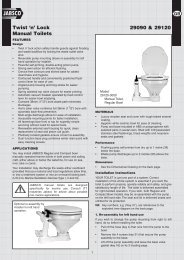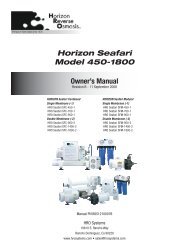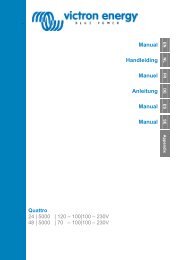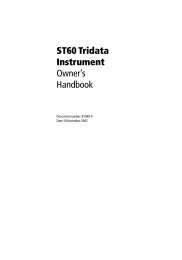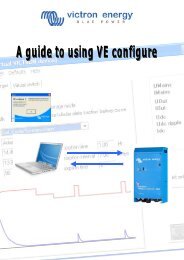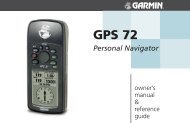Raymarine ST6001 - Zanshin
Raymarine ST6001 - Zanshin
Raymarine ST6001 - Zanshin
Create successful ePaper yourself
Turn your PDF publications into a flip-book with our unique Google optimized e-Paper software.
104 <strong>ST6001</strong>+ Autopilot Control Unit - Owner’s Handbook<br />
Dealer Calibration screens<br />
The illustration shows the screens that appear in the calibration<br />
groups when the <strong>ST6001</strong>+ is connected to a Type 100/300 course<br />
computer.<br />
Vessel type<br />
Vessel type should be set when commissioning the autopilot<br />
(see page 59).<br />
Options<br />
DISPLACE<br />
SEMI DIS<br />
PLANING<br />
STERN DRV<br />
Displacement<br />
Semi-displacement<br />
Planing<br />
Boat with I/O drive (stern drive)<br />
Note: When you select the vessel type, the autopilot will set<br />
appropriate defaults for several other calibration settings.<br />
Compass Calibration lock<br />
This screen controls whether it is possible to access Compass<br />
Calibration.<br />
Options<br />
CAL LOCK OFF<br />
CAL LOCK ON<br />
Lock off: Compass Calibration can be accessed<br />
Lock on: Compass Calibration cannot be accessed<br />
Appendix<br />
Rudder gain<br />
This screen determines the default rudder gain setting. Rudder gain is<br />
a measure of how much helm the autopilot will apply to correct<br />
course errors. The higher the setting, the more rudder will be applied.<br />
You should adjust this setting when commissioning the autopilot.<br />
(see page 71). You can make temporary changes to this rudder gain<br />
value during normal operation (see page 27).<br />
Screen text Range<br />
RUDD GAIN 1 to 9


